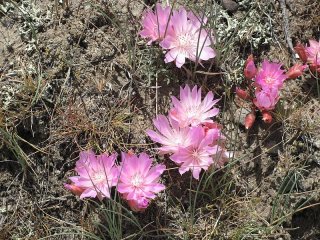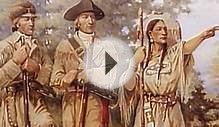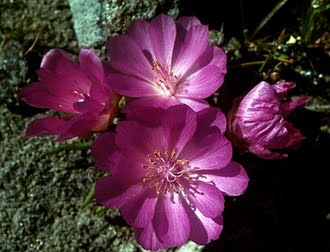

Fast Facts
- Adopted as the State flower of Montana in 1895
- Bitterroot was a Montana icon long before it was voted the State flower
- Botanical name: Lewisia rediviva and Bitterroot Sand Rose
- Also called “the resurrection flower”
- Fun Fact: In 1805, Bitterroot was first discovered by Meriwether Lewis of the historical Lewis and Clark expedition; thus, the genus name of the flower, “Lewisia”
In 1893, after the famous World’s Fair in Chicago, Montana was one of many states that adopted an official flower. With a strong Indian heritage and a name derived from the leader of the Lewis and Clark expedition, the Bitterroot was most appropriate as a state symbol. The Bitterroot has an exquisite pink blossom that grows close to the ground; it’s one of the loveliest, most spectacular wildflowers. Every spring and summer you can find the Bitterroot growing around the base and valleys of mountains of western Montana. The foliage is succulent and rubbery textured. The low-growing perennial plant has a fleshy taproot and a branched base. The flower stems are leafless, bearing at the tip a whorl of 5-6 linear bracts which are 5–10 mm long. A single flower appears on each stem with 6-9 beautiful oval-shaped sepals. They range in color from whitish to deep pink or rose and the petals (usually about 15) are oblong in shape. The plant grows on gravelly to heavy, usually dry soil, in scablands or foothills areas. It is found on sagebrush plains to the lower mountains.
in western and south central Montana. In Montana the Bitterroot is cherished, and a million things are named after it. There’s the Bitterroot Star (newspaper), The Bitterroot Valley (near Glacier State Park), Bitterroot Riverhouse (river and fishing), the Bitterroot Triathlon, Bitterroot National Forest, and Bitterroot Aviation. From Bozeman to Billings, Missoula to Kalispell, the Bitterroot thrives in low and mid elevations, and can live over a year without water! This is how Bitterroot earned the nickname of the “resurrection flower.” Few state flowers are more cherished and beloved than Montana’s Bitterroot. Long before noted explorers Lewis and Clark wrote about the striking, multi-petaled, rich purplish-pink flowers they saw – Native Americans were using the roots for food (it was considered a luxury food) as a vital part of their diets & for trade. Tribes dug up roots and dried them to use for later months; Bitterroot was treasured by Native Americans. Tribes literally timed spring migrations with the blooming of the Bitterroots, so they would be abundant. At major Indian posts and trading centers, the root was a valuable item of trade and barter. A full sack commanded a generous price – usually equal to that of a whole horse. Just one ounce of dried root provided enough nourishment for a meal.
RELATED VIDEO




 Bitterroot (Lewisia rediviva Pursh) is a small, low plant with a pink to white flower. It is the state flower of Montana, United States.
Bitterroot (Lewisia rediviva Pursh) is a small, low plant with a pink to white flower. It is the state flower of Montana, United States.







